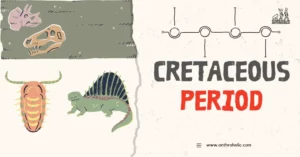+91-7303290503, +91-9557169661 | MON to SUN 10:00 AM - 6:00 PM
Rhodesian Man
The “Rhodesian Man” is a term attributed to prehistoric human remains discovered in Africa, notable for their significance in the study of human evolution. Understanding the Rhodesian Man aids in illuminating the complex narrative of our species’ ancestry.

Introduction to the Rhodesian Man
In 1921, a skull was discovered at Broken Hill, Northern Rhodesia, now Kabwe, Zambia, which provided a vital insight into the early Homo species. This discovery, known as the Rhodesian Man (Homo rhodesiensis), was identified as a near-complete skull and upper jaw, classified as one of the best examples of early Homo [1].
The Classification Debate
The classification of the Rhodesian Man has been the subject of rigorous scientific debate. It has been classified as Homo heidelbergensis by some scholars, considering it a transitional species between Homo erectus and Homo sapiens. Others assign it as an African branch of Neanderthals due to its morphological features [2].
Morphological Features of the Rhodesian Man
The Rhodesian Man’s skull, often referred to as the Kabwe skull, demonstrates distinctive characteristics, providing key insights into our evolutionary past.
Skull and Facial Features
The skull has a capacity of about 1280 cubic centimeters, less than the modern human average but considerably larger than earlier Homo species. It also has prominent brow ridges and a receding forehead, traits also shared with Neanderthals [3].
| Feature | Description |
|---|---|
| Skull Capacity | Approximately 1280 cc |
| Brow Ridges | Prominent |
| Forehead | Receding |
| Teeth | Large |
Dental Characteristics
The teeth, both molars and incisors, were notably larger than those of modern humans, reinforcing the association with earlier Homo species. However, they also show evidence of dental disease, including cavities and periodontal disease, perhaps indicative of dietary habits [4].
Paleoenvironment and Lifestyle
The paleoenvironment in which the Rhodesian Man existed provides valuable insights into the lifestyle and survival strategies of this hominid.
Environment and Diet
The Rhodesian Man inhabited a woodland environment, potentially relying on both hunting and gathering for survival. The presence of dental disease suggests a diet that included carbohydrates, possibly from plant sources or cooked food [5].
Interaction with Other Species
There is a possibility of the Rhodesian Man interacting with other hominid species, such as early Homo sapiens or Neanderthals, although definitive evidence remains elusive. The contemporaneity of these species raises intriguing questions about potential encounters and even interbreeding [6].
Rhodesian Man: Role in Early Tool Use and Development
Not only has the Rhodesian Man given insights into the physical evolution of early Homo species, but it also sheds light on the development of primitive technologies and tool use, further illuminating the human story.
The Oldowan and Acheulean Stone Tools
The Oldowan and Acheulean are two primary Paleolithic technologies associated with early Homo species. Oldowan, the older of the two, is characterized by simple, core and flake tools, while Acheulean tools are more advanced, featuring worked hand axes and cleavers. There is evidence that the Rhodesian Man was associated with the latter, showcasing an evolution in technology and cognitive ability [7].
Acheulean Tool Industry and the Rhodesian Man
The Acheulean stone tool industry, named after the site of Saint-Acheul in France, marked a significant advancement in early human technology. Acheulean tools include hand axes, cleavers, and other bifacial tools (tools flaked on both sides), demonstrating a level of planning and skill far beyond the earlier Oldowan technology. The association of the Rhodesian Man with Acheulean tools indicates a shift in cognitive ability and lifestyle, such as hunting larger game or processing a variety of foods [8].
| Tool Type | Description | Associated With |
|---|---|---|
| Oldowan Tools | Simple, core and flake tools | Earlier Homo species |
| Acheulean Tools | Hand axes, cleavers, bifacial tools | Homo heidelbergensis / Rhodesian Man |
Significance in Cognitive Evolution
The advancement from Oldowan to Acheulean tools represents not just technological progress, but cognitive evolution as well. The ability to conceptualize a finished tool and execute the necessary steps to create it signifies a leap in abstract thinking and planning ability, key aspects of cognitive development. This ability, demonstrated by the Rhodesian Man, is considered a significant step in human evolution [9].
Early Artistic Expressions
While direct evidence of artistic expression by the Rhodesian Man is scant, the increasing cognitive abilities suggested by advanced tool use may indicate a capacity for symbolic thought. Some argue that Acheulean hand axes themselves represent early forms of artistic expression, given their symmetrical shapes and the care that went into their creation [10].
Conclusion: The Significance of the Rhodesian Man
The Rhodesian Man offers a valuable window into a chapter of our evolutionary past, illustrating the diversity of hominid species that once roamed our planet. Regardless of its exact classification, the Rhodesian Man reinforces the fact that our own species, Homo sapiens, is just one branch of a diverse and intricate evolutionary tree.
Future Research Directions
Despite the wealth of knowledge gleaned from the Rhodesian Man, many questions remain unanswered. The precise position of Homo rhodesiensis within the human family tree, its interactions with other hominid species, and the nature of its extinction are fertile grounds for future research.
With each new discovery and technological advancement, we come closer to piecing together the intricate puzzle of our human past. The Rhodesian Man, as a significant representative of early Homo species, undoubtedly holds more secrets yet to be revealed.
References
- Rightmire, G.P. (2008). Homo in the Middle Pleistocene: Hypodigms, Variation, and Species Recognition.
- Schwartz, J.H., Tattersall, I. (2010). Fossil evidence for the origin of Homo sapiens.
- Stringer, C. (2012). The Status of Homo heidelbergensis (Schoetensack 1908).
- Ungar, P.S. (2010). Mammal Teeth: Origin, Evolution, and Diversity.
- Dennell, R., Roebroeks, W. (2005). An Asian perspective on early human dispersal from Africa.
- Hublin, J.J. (2009). The prehistory of compassion.
- Shipton, C., Clarkson, C., Pal, J.N., Jones, S.C., Roberts, R.G., Harris, C., Gupta, M.C., Ditchfield, P.W., Petraglia, M.D. (2013). Generativity, hierarchical action and recursion in the technology of the Acheulean to Middle Palaeolithic transition: A perspective from Patpara, the Son Valley, India.
- McNabb, J., Binyon, F., Hazelwood, L. (2004). The large cutting tools from the South African Acheulean and the question of social traditions.
- Wynn, T., Coolidge, F.L. (2007). Acheulean cognition: An assessment of the evidence.
- Nowell, A., Davidson, I. (2010). Stone tools and the evolution of human cognition.



